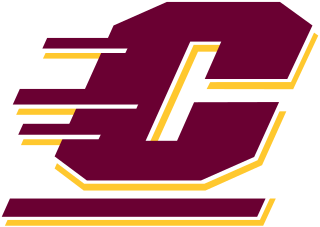Teams
Listed by name, with corresponding NFL team.
| Current or Most Recent Name | Year Established and Former Names | NFL Team |
|---|---|---|
| Arizona Cardinals Cheerleaders | 1964–1987 St. Louis Cardinals Cheerleaders 1988–1993 Phoenix Cardinals Cheerleaders 1994–present Arizona Cardinals Cheerleaders | Arizona Cardinals |
| Atlanta Falcons Cheerleaders | 1969–1976 The Falconettes 1976–present Atlanta Falcons Cheerleaders | Atlanta Falcons |
| Baltimore Ravens Cheerleaders | 1998–present | Baltimore Ravens |
| Buffalo Jills | 1960–1965 Buffalo Bills Cheerleaders 1966–2013 Buffalo Jills | Buffalo Bills |
| Carolina Topcats | 1995–present | Carolina Panthers |
| Chicago Honey Bears | 1976–1985 [3] | Chicago Bears |
| Cincinnati Ben–Gals | 1976–present [4] | Cincinnati Bengals |
| Dallas Cowboys Cheerleaders | 1961–1971 CowBelles & Beaux 1972–present Dallas Cowboys Cheerleaders [5] | Dallas Cowboys |
| Denver Broncos Cheerleaders | 1971–1976 Bronco Belles 1977–1985 Pony Express 1993–present Denver Broncos Cheerleaders | Denver Broncos |
| Detroit Lions Cheerleaders | 1963-1974 [6] 2016–present Detroit Lions Cheerleaders [7] | Detroit Lions |
| Green Bay Packers Cheerleaders | 1957–1961 Packerettes 1961–1972 Golden Girls 1973–1977 Packerettes [8] [9] 1977–1986 Sideliners [10] 1987–2006 University of Wisconsin–Green Bay cheerleaders 2007–present UWGB and St. Norbert College cheerleaders | Green Bay Packers |
| Houston Texans Cheerleaders | 2002–present | Houston Texans |
| Indianapolis Colts Cheerleaders | 1954–1983 Baltimore Colts Cheerleaders 1984–present Indianapolis Colts Cheerleaders | Indianapolis Colts |
| Jacksonville Roar | 1995–present | Jacksonville Jaguars |
| Kansas City Chiefs Cheerleaders | 1964 Chiefs Cheerleaders 1971-85 Chiefettes 1986–present Chiefs Cheerleaders [11] | Kansas City Chiefs |
| Las Vegas Raiderettes | 1961–present [12] | Las Vegas Raiders |
| Los Angeles Charger Girls | 1960s–70s Chargettes 1990–2016 San Diego Charger Girls 2017–2021 Los Angeles Charger Girls [13] | Los Angeles Chargers |
| Los Angeles Rams Cheerleaders | 1974–1994 Embraceable Ewes 1995–2015 St. Louis Rams Cheerleaders 2016–present Los Angeles Rams Cheerleaders | Los Angeles Rams |
| Miami Dolphins Cheerleaders [14] | 1966–1977 Dolphin Dolls 1978–1983 Dolphins Starbrites 1984–present Miami Dolphins Cheerleaders | Miami Dolphins |
| Minnesota Vikings Cheerleaders | 1961–1963 Vi-Queens 1964–1965, 1967–1983 The Parkettes (St. Louis Park High School) 1966 Edina High School and Mpls Roosevelt High School 1984–present Minnesota Vikings Cheerleaders | Minnesota Vikings |
| New England Patriots Cheerleaders | 1977–present | New England Patriots |
| New Orleans Saintsations | 1967 Louisiannes/Saints Dancers 1968 Mademoiselles 1971 Mam’selles 1975–78 Bonnies Amies 1978 Angels 1987–present Saintsations | New Orleans Saints |
| Jet Set Rockettes 1966 - 1969 | New York Jets Flight Crew | New York Jets |
| Philadelphia Eagles Cheerleaders | 1948–1970s Eaglettes 1970s Liberty Belles 1986–present The Eagles Cheerleaders | Philadelphia Eagles |
| Pittsburgh Steelerettes | 1960–1969 [15] | Pittsburgh Steelers |
| San Francisco 49ers Gold Rush | 1979–present [16] | San Francisco 49ers |
| Seahawks Dancers | Sea Gals 1976–2019 [17] Seahawks Dancers 2019–Present | Seattle Seahawks |
| Tampa Bay Buccaneers Cheerleaders | 1976–1998 SwashBucklers 1999–present Tampa Bay Buccaneers Cheerleaders [18] | Tampa Bay Buccaneers |
| Tennessee Titans Cheerleaders | 1975–1997 The Derrick Dolls 1998–present Tennessee Titans Cheerleaders | Tennessee Titans |
| Command Force | 1962-1997 Washington Redskins Cheerleaders "Redskinettes" 1998–2020 Washington Redskins Cheerleaders [19] [20] "First Ladies of Football" [21] 2021 Washington Entertainment Team 2022–present Command Force [22] | Washington Commanders |
Teams without cheerleaders

As of 2023, eight teams do not have cheerleading squads: Buffalo Bills, Chicago Bears, Cleveland Browns, Green Bay Packers, New York Giants, New York Jets, Los Angeles Chargers and the Pittsburgh Steelers. The Packers do, however, use a collegiate squad to cheer at home games. [23] Super Bowl XLV between the Steelers and the Packers in February 2011 was the first time a Super Bowl featured no cheerleaders. The Browns and the Giants are the only NFL teams that have never had cheerleaders, while the other aforementioned teams have had cheer squads in the past. However, there are reports that the Browns did have cheerleaders in 1971, but no records exist. [24]
The Buffalo Bills endorsed the officially independent Buffalo Jills from 1966 to 2013; when several cheerleaders sued both the Bills and the Bills organizations, the Jills suspended operations. [25]
Teams of "unofficial" cheerleaders began emerging in 2010 for NFL teams that did not have their own dance squad. These unofficial cheerleaders are not sanctioned by the NFL or any franchise in the NFL and therefore are not allowed to perform at games, represent the football team at any outside functions, or use any of the team's branding or trademarked colors on their uniforms. The teams are sponsored by local businesses, and the cheerleaders perform prior to the game, at tailgate parties, and other local events. Some also attend the local NFL games in uniform, and sit together in their block of season ticket seats. Their audition process, costuming, and choreography are very similar to official NFL cheer teams. Some also produce an annual swimsuit calendar, just like the legitimate cheerleaders. All of the independent teams hope at some point to be embraced by the NFL as "official" cheerleaders of their local teams.
- The Detroit Pride Cheerleaders were the first independent professional team, put together in August 2010 to support the Lions. [26] However, as the squad was not officially recognized by the Lions, it could not use the Lions' logos nor colors. [27] In 2016, the Lions started an official cheerleading squad.
- The Gotham City Cheerleaders were organized in August 2011 to support all New York sports, but are most closely associated with the Giants. The team has also been known as the New York Unofficials, the Unofficial Dancers of the New York Giants, and the Gotham's Team Blue Army Dancers. [28]
- The Cleveland Spirit Cheerleaders were created in September 2012 to support the Browns as a test team to attract fan interest. [27] This cheer team was created by the same people responsible for the Detroit Pride. [29]















